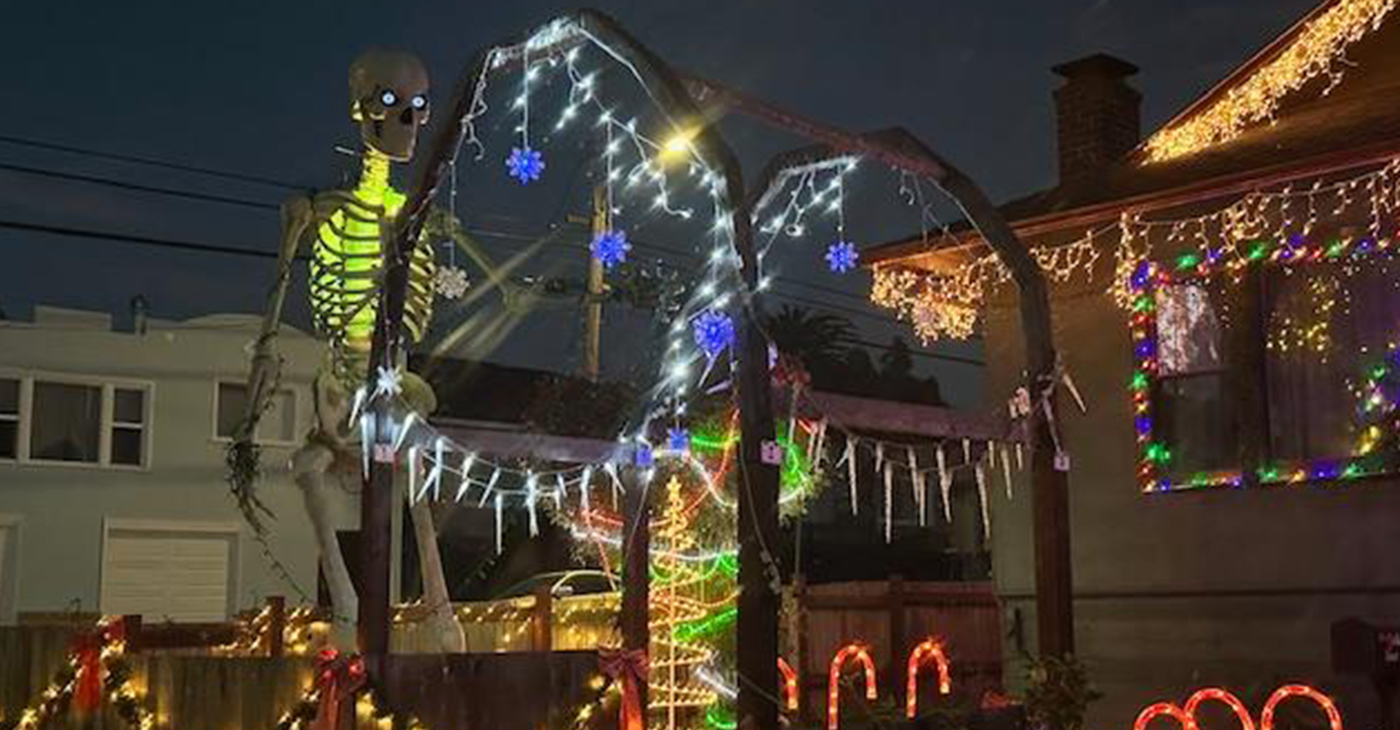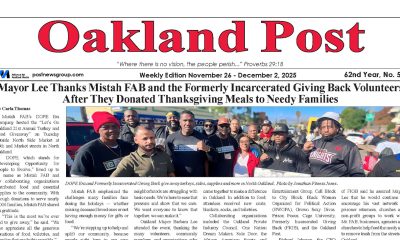Bay Area
Police Reform Measures: Possible Solutions for Vallejo
In an attempt to find the most promising solutions, the City Council has voted to conduct a citywide equity study that would help officials make meaningful decisions on which programs and services to fund amid the “defund the police” movement.

There is no magic solution to reforming a police department.
The city of Vallejo is learning that the hard way as it attempts to mend a police force that has killed 19 people since 2010 in the city of 120,000.
Moving forward, Vallejo will need to decide how to address not just the number of fatal interactions between the police and local residents, but also the broader issue of police-community relations and trust.
Three other Bay Area cities — Oakland, San Francisco and Richmond — have attempted reforming their police departments with approaches as varied as federal oversight to civilian commissions to community policing to bolstered social services.
At least some Vallejo leaders have taken note and seem particularly keen to apply the measures that build bridges rather than silos.
“The department needs an adequate command staff, which can help to change the culture,” said Vallejo Mayor Robert McConnell. “That culture change includes a respect for citizens, officers receiving the proper training, and learning how to apply the appropriate force when confronted.”
McConnell said he is confident the city is moving in the right direction when it comes to reforming the police force, “albeit the process is going slowly.”
Among the most promising reform measures, city leaders believe Vallejo might well benefit from a civilian-led police commission with an investigative agency that reports directly to the commission. Such oversight could bring real change to the department, especially if the Vallejo community has a voice in the process.
San Francisco and Oakland have powerful police commissions — and similarly powerful investigative agencies attached to those commissions. These commissions can impose officer discipline and even have the authority to fire their respective police chiefs.
Some activists, as well as many family members of those killed by Vallejo police, however, argue that a police commission doesn’t go far enough.
They argue that federal oversight is the only way to meaningfully reform Vallejo’s police force. That can be a long process. In Oakland, for example, the Police Department has been under federal oversight for more than 18 years with no end in sight.
Civil rights attorney James Chanin, who represented victims in “The Riders” case and helped secure the Negotiated Settlement Agreement that placed Oakland police under federal oversight, said reform efforts are moving in the right direction — although slowly.
“I would like to see (federal oversight) end with all the reforms met,” he said. “It was supposed to end within five years — with two additional years if needed. That would have been 2010 — we are a long way from 2010.”
Chanin said he hopes Oakland police will come into compliance by the end of 2022.
The civil rights lawyer said police reform is about political will.
“We tried with the city of Oakland. Settlements after settlements didn’t work,” said Chanin. “There was no political will to change so we went to the court instead.”
While some attorneys for the families of victims say they would like to see a federal monitor in Vallejo, that would require a court order or formal settlement, and in the absence of such an order it’s impossible to speculate what type of oversight a monitor might seek.
The city of Richmond and its efforts to connect police with residents may offer the most promising example for Vallejo. In Richmond, a neighborhood policing model adopted under former Police Chief Chris Magnus helped reduce crime and build a bridge between the Police Department and community.
Although it faces funding pressures, Richmond has used foot and bicycle patrols to put officers more in touch with community residents, and the results have been encouraging. Although homicide numbers, for example, are showing an uptick, they remain well below pre-beat policing levels.
Vallejo has made some small steps along this path. Through its Operation PEACE (Predictive Enforcement and Community Engagement) project, begun last year under Chief Shawny Williams, the city has sought to improve interactions between police and the community, using bike patrols and other measures. And last year, the city council agreed to hire an interim police auditor to review internal police investigations. City officials are also weighing an outside project called Advance Peace that works on a variety of levels to reduce gun violence.
These steps are all encouraging, but it seems clear that police-community relations remain characterized by community distrust of law enforcement and an us-versus-them attitude among officers. The Vallejo Police Officers Association did not respond to a request for comments on this series.
Perhaps the greatest reason for hope lies in the recognition that stronger measures are needed.
In an attempt to find the most promising solutions, the City Council has voted to conduct a citywide equity study that would help officials make meaningful decisions on which programs and services to fund amid the “defund the police” movement.
Vallejo City Councilwoman Pippin Dew pushed for the survey.
“We need to understand how these systemic biases exist. If we can understand it, we can change it,” said Dew, saying it doesn’t make sense to re-allocate city money, especially from the police budget, without having a plan on where to direct the funding.
Dew said she believes “defunding the police” should be more about placing money in “comprehensive, robust, early education centers” that are affordable and located in places that families can reach by walking.
“For me, it’s about coming at that approach to reduce crime,” Dew added. “I would love this to be a long-term approach to defunding the police. That’s where we start.”
Activism
Oakland Post: Week of December 24 – 30, 2025
The printed Weekly Edition of the Oakland Post: Week of – December 24 – 30, 2025

To enlarge your view of this issue, use the slider, magnifying glass icon or full page icon in the lower right corner of the browser window.
Alameda County
Bling It On: Holiday Lights Brighten Dark Nights All Around the Bay
On the block where I grew up in the 1960s, it was an unwritten agreement among the owners of those row homes to put up holiday lights: around the front window and door, along the porch banister, etc. Some put the Christmas tree in the window, and you could see it through the open slats of the blinds.

By Wanda Ravernell
I have always liked Christmas lights.
From my desk at my front window, I feel a quiet joy when the lights on the house across the street come on just as night falls.
On the block where I grew up in the 1960s, it was an unwritten agreement among the owners of those row homes to put up holiday lights: around the front window and door, along the porch banister, etc. Some put the Christmas tree in the window, and you could see it through the open slats of the blinds.
My father, the renegade of the block, made no effort with lights, so my mother hung a wreath with two bells in the window. Just enough to let you know someone was at home.
Two doors down was a different story. Mr. King, the overachiever of the block, went all out for Christmas: The tree in the window, the lights along the roof and a Santa on his sleigh on the porch roof.
There are a few ‘Mr. Kings’ in my neighborhood.
In particular is the gentleman down the street. For Halloween, they erected a 10-foot skeleton in the yard, placed ‘shrunken heads’ on fence poles, pumpkins on steps and swooping bat wings from the porch roof. They have not held back for Christmas.
The skeleton stayed up this year, this time swathed in lights, as is every other inch of the house front. It is a light show that rivals the one in the old Wanamaker’s department store in Philadelphia.
I would hate to see their light bill…
As the shortest day of the year approaches, make Mr. King’s spirit happy and get out and see the lights in your own neighborhood, shopping plazas and merchant areas.
Here are some places recommended by 510 Families and Johnny FunCheap.
Oakland
Oakland’s Temple Hill Holiday Lights and Gardens is the place to go for a drive-by or a leisurely stroll for a religious holiday experience. Wear a jacket, because it’s chilly outside the Church of Jesus Christ of Latter-day Saints, at 4220 Lincoln Ave., particularly after dark. The gardens are open all day from 9 a.m. to 9 p.m. with the lights on from dusk until closing.
Alameda
Just across the High Street Bridge from Oakland, you’ll find Christmas Tree Lane in Alameda.
On Thompson Avenue between High Street and Fernside drive, displays range from classic trees and blow-ups to a comedic response to the film “The Nightmare Before Christmas.” Lights turn on at dusk and can be seen through the first week in January.
Berkeley
The Fourth Street business district from University Avenue to Virginia Street in Berkeley comes alive with lights beginning at 5 p.m. through Jan. 1, 2026.
There’s also a display at one house at 928 Arlington St., and, for children, the Tilden Park Carousel Winter Wonderland runs through Jan. 4, 2026. Closed Christmas Day. For more information and tickets, call (510) 559-1004.
Richmond
The Sundar Shadi Holiday Display, featuring a recreation of the town of Bethlehem with life-size figures, is open through Dec. 26 at 7501 Moeser Lane in El Cerrito.
Marin County
In Marin, the go-to spot for ‘oohs and ahhs’ is the Holiday Light Spectacular from 4-9 p.m. through Jan. 4, 2026, at Marin Center Fairgrounds at 10 Ave of the Flags in San Rafael through Jan. 4. Displays dazzle, with lighted walkways and activities almost daily. For more info, go to: www.marincounty.gov/departments/cultural-services/department-sponsored-events/holiday-light-spectacular
The arches at Marin County Civic Center at 3501 Civic Center Dr. will also be illuminated nightly.
San Francisco
Look for light installations in Golden Gate Park, chocolate and cheer at Ghirardelli Square, and downtown, the ice rink in Union Square and the holiday tree in Civic Center Plaza are enchanting spots day and night. For neighborhoods, you can’t beat the streets in Noe Valley, Pacific Heights, and Bernal Heights. For glee and over-the-top glitz there’s the Castro, particularly at 68 Castro Street.
Livermore
The winner of the 2024 Great Light Flight award, Deacon Dave has set up his display with a group of creative volunteers at 352 Hillcrest Avenue since 1982. See it through Jan. 1, 2026. For more info, go to https://www.casadelpomba.com
Fremont
Crippsmas Place is a community of over 90 decorated homes with candy canes passed out nightly through Dec. 31. A tradition since 1967, the event features visits by Mr. and Mrs. Claus on Dec. 18 and Dec. 23 and entertainment by the Tri-M Honor Society at 6 p.m. on Dec. 22. Chrippsmas Place is located on: Cripps Place, Asquith Place, Nicolet Court, Wellington Place, Perkins Street, and the stretch of Nicolet Avenue between Gibraltar Drive and Perkins Street.
Alameda County
Oakland Council Expands Citywide Security Cameras Despite Major Opposition
In a 7-1 vote in favor of the contract, with only District 3 Councilmember Carroll Fife voting no, the Council agreed to maintain its existing network of 291 cameras and add 40 new “pan-tilt-zoom cameras.”

By Post Staff
The Oakland City Council this week approved a $2.25 million contract with Flock Safety for a mass surveillance network of hundreds of security cameras to track vehicles in the city.
In a 7-1 vote in favor of the contract, with only District 3 Councilmember Carroll Fife voting no, the Council agreed to maintain its existing network of 291 cameras and add 40 new “pan-tilt-zoom cameras.”
In recent weeks hundreds of local residents have spoken against the camera system, raising concerns that data will be shared with immigration authorities and other federal agencies at a time when mass surveillance is growing across the country with little regard for individual rights.
The Flock network, supported by the Oakland Police Department, has the backing of residents and councilmembers who see it as an important tool to protect public safety.
“This system makes the Department more efficient as it allows for information related to disruptive/violent criminal activities to be captured … and allows for precise and focused enforcement,” OPD wrote in its proposal to City Council.
According to OPD, police made 232 arrests using data from Flock cameras between July 2024 and November of this year.
Based on the data, police say they recovered 68 guns, and utilizing the countywide system, they have found 1,100 stolen vehicles.
However, Flock’s cameras cast a wide net. The company’s cameras in Oakland last month captured license plate numbers and other information from about 1.4 million vehicles.
Speaking at Tuesday’s Council meeting, Fife was critical of her colleagues for signing a contract with a company that has been in the national spotlight for sharing data with federal agencies.
Flock’s cameras – which are automated license plate readers – have been used in tracking people who have had abortions, monitoring protesters, and aiding in deportation roundups.
“I don’t know how we get up and have several press conferences talking about how we are supportive of a sanctuary city status but then use a vendor that has been shown to have a direct relationship with (the U.S.) Border Control,” she said. “It doesn’t make sense to me.”
Several councilmembers who voted in favor of the contract said they supported the deal as long as some safeguards were written into the Council’s resolution.
“We’re not aiming for perfection,” said District 1 Councilmember Zac Unger. “This is not Orwellian facial recognition technology — that’s prohibited in Oakland. The road forward here is to add as many amendments as we can.”
Amendments passed by the Council prohibit OPD from sharing camera data with any other agencies for the purpose of “criminalizing reproductive or gender affirming healthcare” or for federal immigration enforcement. California state law also prohibits the sharing of license plate reader data with the federal government, and because Oakland’s sanctuary city status, OPD is not allowed to cooperate with immigration authorities.
A former member of Oakland’s Privacy Advisory Commission has sued OPD, alleging that it has violated its own rules around data sharing.
So far, OPD has shared Flock data with 50 other law enforcement agencies.
-

 #NNPA BlackPress4 weeks ago
#NNPA BlackPress4 weeks agoLIHEAP Funds Released After Weeks of Delay as States and the District Rush to Protect Households from the Cold
-

 Activism4 weeks ago
Activism4 weeks agoOakland Post: Week of November 26 – December 2, 2025
-

 Alameda County3 weeks ago
Alameda County3 weeks agoSeth Curry Makes Impressive Debut with the Golden State Warriors
-

 #NNPA BlackPress4 weeks ago
#NNPA BlackPress4 weeks agoSeven Steps to Help Your Child Build Meaningful Connections
-

 #NNPA BlackPress4 weeks ago
#NNPA BlackPress4 weeks agoSeven Steps to Help Your Child Build Meaningful Connections
-

 #NNPA BlackPress4 weeks ago
#NNPA BlackPress4 weeks agoTrinidad and Tobago – Prime Minister Confirms U.S. Marines Working on Tobago Radar System
-

 #NNPA BlackPress4 weeks ago
#NNPA BlackPress4 weeks agoThanksgiving Celebrated Across the Tri-State
-

 #NNPA BlackPress4 weeks ago
#NNPA BlackPress4 weeks agoTeens Reject Today’s News as Trump Intensifies His Assault on the Press




















































